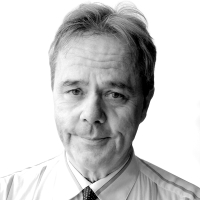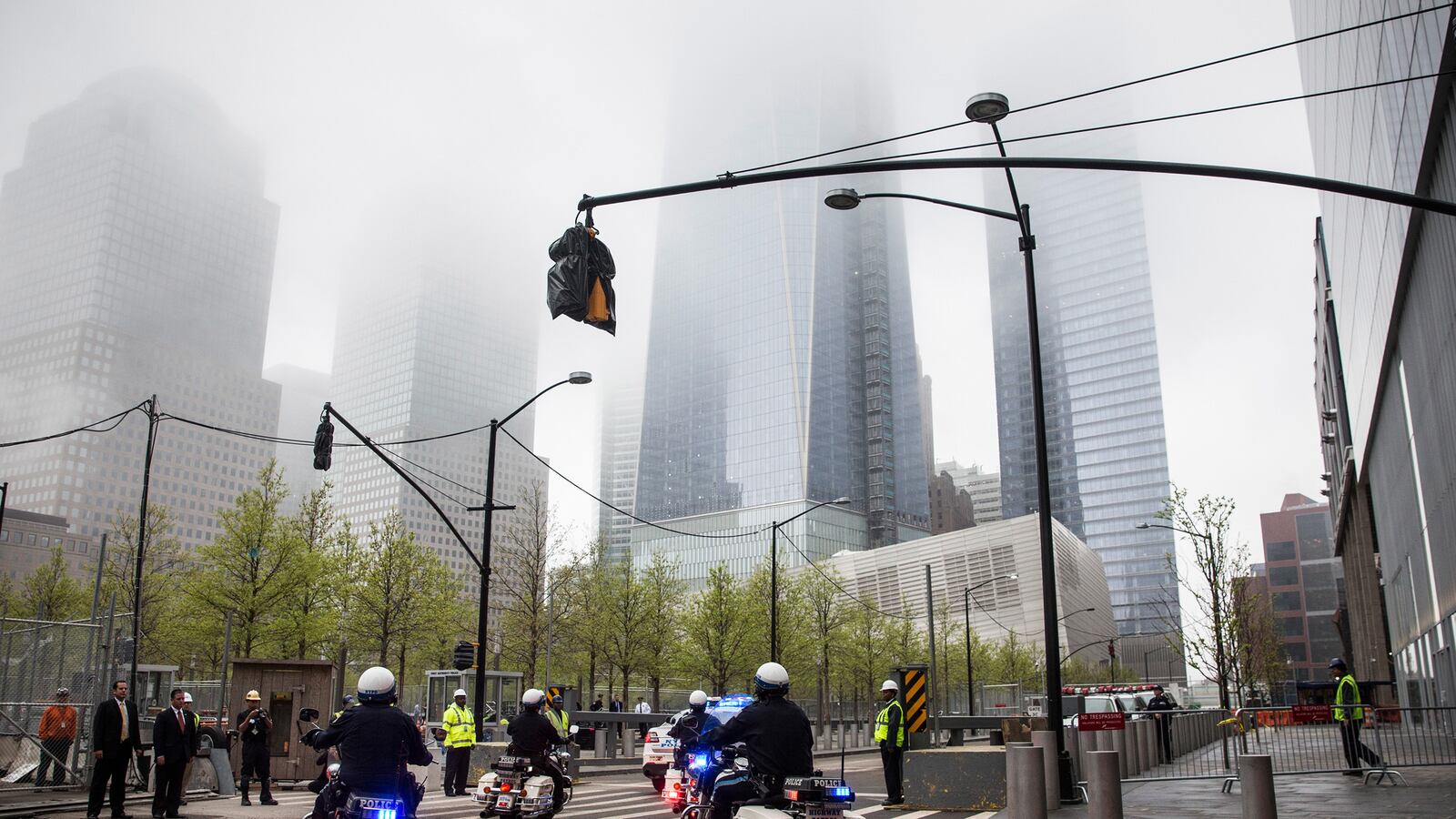The thick early morning mist was just beginning to clear at 7:04 a.m., when the flashing lights of a radio cars and an escort of four police motorcycles appeared on the street leading to Ground Zero.

Behind them came an NYPD emergency service truck and then a ceremonial FDNY rig and then a Port Authority Police emergency service truck. Each bore a flag covered military transfer case, together transporting 7,390 unidentified or unclaimed human remains.
A line of 10 firefighters from Engine 10/Ladder 10 saluted from in front of the little firehouse that had somehow survived when the South Tower collapsed directly across the street on 9/11. The firefighters were in work attire and on duty, just an alarm away from dashing into whatever new danger might present itself.
“Still Standing,” read the firehouse motto stenciled on the front of the two rigs parked behind them.
Until 20 minutes before, the mist had completely obscured whatever stood across the plaza at the 9/11 Memorial. The blankness had invited the mind to think back to mornings before September 11, when the mist had concealed the twin towers. And there had been those mornings afterwards, when it concealed nothing at all.
But as the procession now turned right and stopped by the entrance to the memorial, the mist had cleared to where the base of the lone new tower had become visible, proof that now was now.
Honor guards in dress uniform from the NPYD, the FDNY, and the NYPD formed at the back of their respective vehicles. They solemnly removed the transport cases that had been provided for the occasion by the military mortuary at Dover Air Force base. That is where our many dead have returned during the long years of war that followed the attack on 9/11.
The cases were borne across the plaza where twin reflecting pools are sunk into the footprints of the fallen towers, the edges inscribed with the names of the 2,753 who were killed here.
No remains at all had been identified for 1,118 of them after nearly 13 years of testing with ever-improving technology at the Chief Medical Examiner’s Office. Some identified remains were unclaimed by families that had already held funerals for other parts of their loved ones.
Everything that had gone unidentified or unclaimed was being returned, fathers and mothers, sons and daughters arriving in sacred Vacu-packed fragments back at the place of their murder.
Among the family members who had come to witness the transfer were a number who had donned black gags to symbolize the absence of their voice in deciding what was to be done with the remains. The protestors removed their gags as a sign of respect when they saw the honor guards approach.
At this point, the ceremony was itself as respectful as any of the families could have desired. The objections of some began as the procession reached the entrance to the new museum, where the remains are to be stored in an underground chamber.
“The respect turned to disrespect once they took them down to the basement," FDNY Lt. Jim McCaffrey said afterwards.
McCaffrey is the brother-in-law of FDNY Chief Orio Palmer, who was among the few to reach the 78th floor of the South Tower before it collapsed. Palmer’s remarkable courage and calm were preserved in recordings of his radio transmissions. But no remains were ever recovered and could very well have been among those that were carried into the museum and lowered by elevator.
“Seventy feet below ground,” McCaffrey said. “We never wanted it, but they never asked our opinion.”
McCaffrey wondered aloud why the dead from the single bloodiest attack on American soil in our history could not be accorded an above ground vault similar to the Tomb of the Unknown Solider in Arlington National Cemetery.
“The Tomb for the Unknowns, how hard could that be?” McCaffrey asked. “It doesn't have to be very big, just respectful.”
He suggested that an aboveground tomb might help remind visitors that the memorial is just not just another stop for New York City sightseers.
“People think of it as just something to see,” McCaffrey said. “It’s like a tourist attraction.”
He also noted that the flags covering the transfer cases were the only flags in evidence on Saturday morning.
“You had an attack on the United States of America and you can’t find one flag on that Plaza,” McCaffrey said. “You have 400 trees and no flags.”
Other family members approved of the underground repository. They included Monica Iken Murphy, whose husband was a broker on the 84th floor of the South Tower, one of the very people Palmer died trying to save.
“We always wanted this to happen,” Murphy told NBC of Saturday’s return. “To have their remains at their final resting place where they took their last breath.”
Nobody could object to the way in which the cases were carried from the elevator and set upon stanchions at the repository. A PAPD chaplain said a prayer and the three honor guards folded the three flags as they would at a triple burial. The flags were then presented to the museum.
The medical examiner’s office had retained samples that it will continue to test and to oversee the repository in the event it needs more or a family decides to claim remains.
The most recent identifications were made late last month, four fragments of a firefighter who had died in the North Tower serving with Engine 33. The medical examiner’s office had then notified the firefighter’s father.
“Skull, right hand, left finger, just above an elbow,” the father told The Daily Beast.
The father had received similar calls previously. He asked the examiner’s office how many pieces of his son had now been identified in total.
“They said 24,” the father reports.
He and his wife decided not to claim the pieces as they had already held a funeral with what had been recovered early on.
“We had a leg,” he recalls.
The 24 additional pieces might be reclaimed after either the father or mother dies and be buried along with that parent. The two dozen fragments will otherwise reside with the 7,366 other remains that are now back to where they had all been parts of whole, living people.
On Saturday, the firefighter from Engine 33 missed his nephew’s first communion.
And on Sunday, he and all those who died with him will miss another Mother’s Day.






